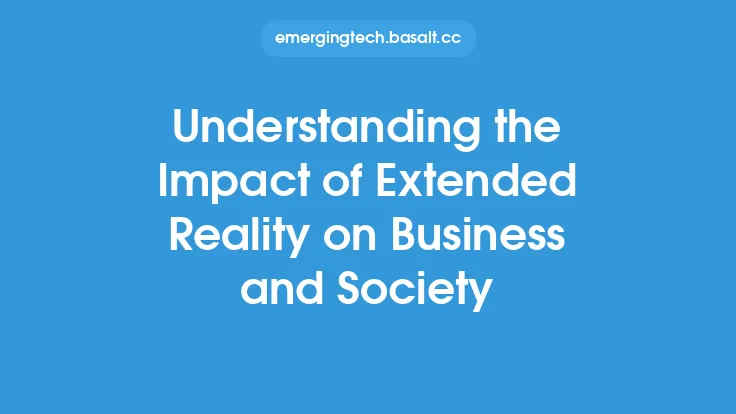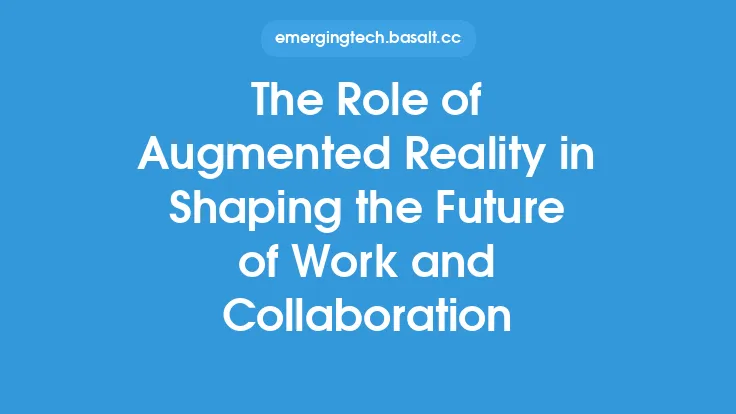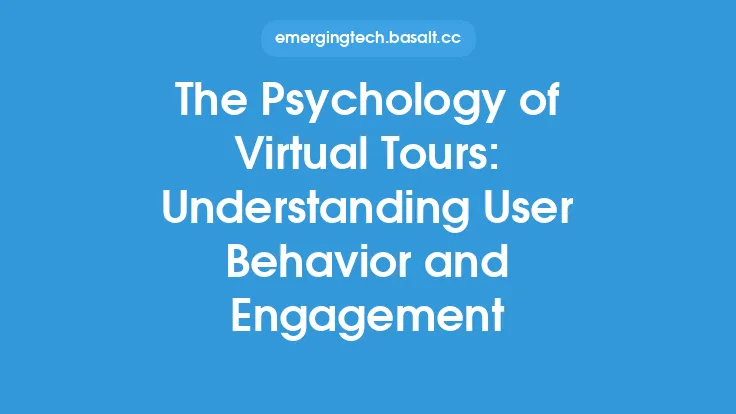The concept of mixed reality (MR) has been gaining significant attention in recent years, and its potential to enhance user experience and engagement is vast. MR is a technology that combines the virtual and real worlds to create a hybrid environment where physical and digital objects coexist and interact in real-time. This technology has the potential to revolutionize the way we interact with information, each other, and the world around us. In this article, we will delve into the role of mixed reality in enhancing user experience and engagement, exploring its technical aspects, benefits, and applications.
Introduction to Mixed Reality
Mixed reality is a form of immersive technology that blends the virtual and real worlds to create a seamless and interactive experience. It uses a combination of sensors, cameras, and display technologies to track the user's movements and surroundings, allowing virtual objects to be superimposed onto the real world. This technology has the potential to enhance user experience and engagement by providing a more immersive and interactive way of interacting with information and the environment.
Technical Aspects of Mixed Reality
From a technical perspective, mixed reality relies on several key components, including displays, sensors, and tracking systems. The display technology used in MR devices can range from see-through displays, such as holographic displays or transparent LCDs, to video see-through displays, which use a camera to capture the real world and display it on a screen. Sensors, such as accelerometers, gyroscopes, and magnetometers, are used to track the user's movements and orientation, allowing the virtual objects to be accurately superimposed onto the real world. Tracking systems, such as SLAM (Simultaneous Localization and Mapping) or marker-based tracking, are used to track the user's position and orientation in the environment.
Enhancing User Experience with Mixed Reality
Mixed reality has the potential to enhance user experience in a variety of ways. For example, in the field of education, MR can be used to create interactive and immersive learning experiences that simulate real-world environments and scenarios. This can help students to better understand complex concepts and retain information more effectively. In the field of entertainment, MR can be used to create immersive and interactive experiences, such as virtual scavenger hunts or interactive games, that blur the line between the physical and virtual worlds. In the field of healthcare, MR can be used to create personalized and interactive treatment plans, such as virtual therapy sessions or interactive health monitoring systems.
Engagement and Interaction with Mixed Reality
Mixed reality also has the potential to increase user engagement and interaction. For example, in the field of marketing, MR can be used to create interactive and immersive brand experiences that allow customers to engage with products and services in a more meaningful way. In the field of training and simulation, MR can be used to create realistic and interactive simulations that allow users to practice and train in a safe and controlled environment. In the field of social interaction, MR can be used to create virtual social spaces that allow people to interact and connect with each other in a more immersive and engaging way.
Benefits of Mixed Reality
The benefits of mixed reality are numerous and varied. Some of the key benefits include increased user engagement and interaction, improved learning outcomes, enhanced customer experience, and increased productivity. MR also has the potential to improve accessibility and inclusivity, by providing a more immersive and interactive way of interacting with information and the environment. Additionally, MR can help to reduce costs and improve efficiency, by providing a more effective and engaging way of training and simulating complex tasks and scenarios.
Applications of Mixed Reality in Enhancing User Experience
Mixed reality has a wide range of applications in enhancing user experience, including education, entertainment, healthcare, marketing, and training and simulation. In education, MR can be used to create interactive and immersive learning experiences that simulate real-world environments and scenarios. In entertainment, MR can be used to create immersive and interactive experiences, such as virtual scavenger hunts or interactive games. In healthcare, MR can be used to create personalized and interactive treatment plans, such as virtual therapy sessions or interactive health monitoring systems. In marketing, MR can be used to create interactive and immersive brand experiences that allow customers to engage with products and services in a more meaningful way.
Challenges and Limitations of Mixed Reality
While mixed reality has the potential to enhance user experience and engagement, there are also several challenges and limitations that need to be addressed. Some of the key challenges include the high cost of MR devices and software, the limited availability of MR content, and the need for more advanced tracking and sensing technologies. Additionally, MR can also raise concerns around privacy and security, as well as the potential for addiction and social isolation. To overcome these challenges, it is essential to develop more affordable and accessible MR technologies, as well as to create more engaging and interactive MR content.
Future of Mixed Reality
The future of mixed reality is exciting and rapidly evolving. As the technology continues to advance and improve, we can expect to see more widespread adoption and application of MR in a variety of fields. Some of the key trends and predictions for the future of MR include the development of more advanced tracking and sensing technologies, the creation of more engaging and interactive MR content, and the increased use of MR in fields such as education, healthcare, and marketing. Additionally, the future of MR is also likely to be shaped by the development of new technologies, such as artificial intelligence and the Internet of Things, which will enable more seamless and interactive MR experiences.





